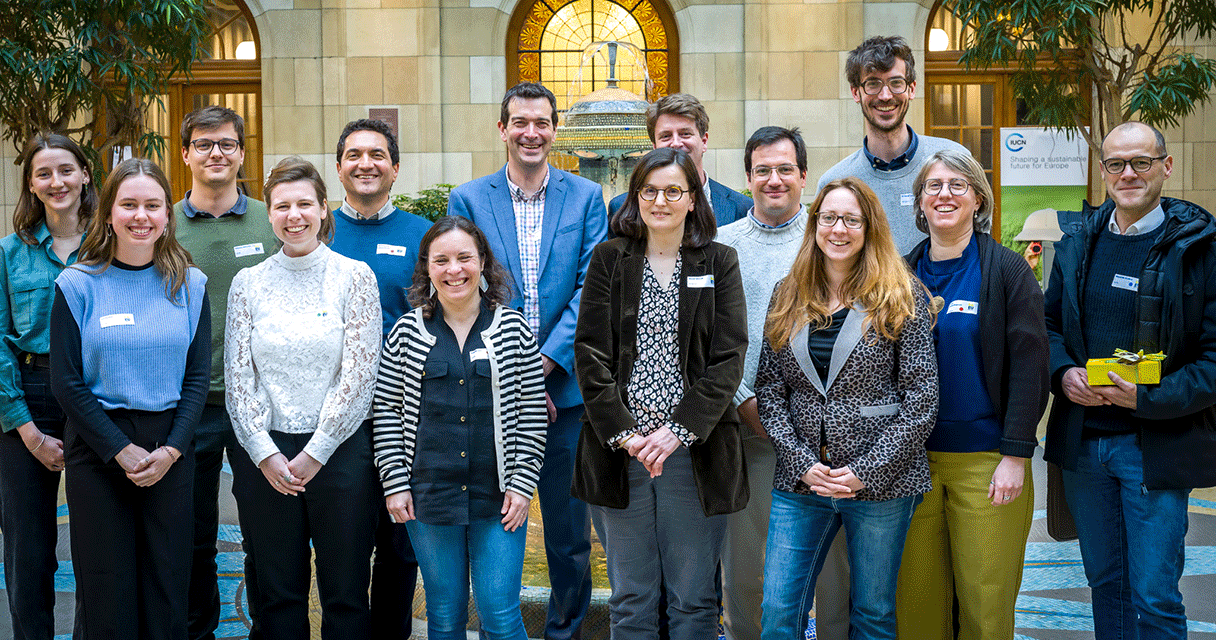IUCN welcomes Intergovernmental Platform's Assessment of risk from 3,500 Invasive Alien Species to global biodiversity
Gland, Switzerland, 4 September 2023 (IUCN) – IUCN, the International Union for Conservation Nature, welcomes the Assessment Report on Invasive Alien Species and their Control, today launched at the tenth plenary of the Intergovernmental Platform on Biodiversity and Ecosystem Services (IPBES10), in Bonn, Germany.
Experts from the IUCN Species Survival Commission (SSC) Invasive Species Specialist Group (ISSG) helped inform the assessment, contributing integral data and expertise to assess the risk from 37,000 known alien species.
These are species that have been introduced to areas outside their natural range, either intentionally or unintentionally by human activities and are rising at unprecedented rates. Evidence of negative impacts upon nature have been recorded for more than 3,500 of these, which are categorised as Invasive Alien Species (IAS). These often also have negative impacts on people.
Using data from the IUCN Red List of Threatened Species™, which assesses the extinction risk of over 150,000 species, the assessment reports that these IAS have been a significant driver in 60% of documented plant and animal extinctions.
The assessment concludes that there is a growing global threat posed by IAS, as their numbers are predicted to rise under a business-as-usual approach. The document urges integrated action, across and within countries and various sectors, in order to support efforts to achieve the Kunming-Montreal Global Biodiversity Framework (GBF) target 6 on invasive alien species and the Sustainable Development Goals.
IUCN knowledge was key in reaching this recommendation. Data from the Global Invasive Species Database, managed by ISSG, and the Global Register of Introduced and Invasive Species, which is an ISSG-led initiative publishing verified country inventories of alien species, informed the report. In addition, the assessment used the recently published IUCN Environmental Impact Classification for Alien Taxa (EICAT), to help define negative impacts from IAS upon nature and is highlighted as a key tool to reduce data gaps on impacts from IAS in the future. The invasive species policy response indicator, for which IUCN serves as the official custodian agency, was also spotlighted in the assessment as a key tool for tracking progress towards UN Sustainable Development Goal Target 15.8.
“The Invasive Alien Species Report is particularly important to IUCN, given IUCN’s long-standing work and engagement in IAS issues, in particular through the IUCN SSC Invasive Species Specialist Group.
“IAS are a leading threat to global biodiversity, posing a serious challenge to conservation - a threat that is only increasing due to globalisation, climate change, and other human activity. It is important that policy and decision-makers utilise the recommendations made in this assessment for combatting IAS and preserving nature,” Dr Thomas Brooks, IUCN’s Chief Scientist, said.
Dr Piero Genovesi, ISSG Chair, contributed as review editor for the IPBES-10 Assessment.
“This report has identified 3,500 invasive species that are severely harming biodiversity and human livelihood. These are increasing rapidly, with a forecast increase of 36% by 2050. To achieve the Global Biodiversity Framework goals, it is essential to address this threat and IUCN experts have been working to provide technical expertise to governments and stakeholders. It is good to see this expertise reflected in the IPBES-10 Assessment, which I hope will mobilise action. It is still possible to limit the threat from IAS, but it requires cross-sector and international collaboration, political will from governments and substantial resources,” Dr Genovesi said.
IAS also often pose a critical threat to human health, food security, livelihoods and economies, and are linked to climate change. In 2019 IAS cost the global economy in excess of US$423 billion, according to the assessment, with this figure set to quadruple every 10 years.
According to The IUCN Red List, IAS are one of the top causes of biodiversity loss and one of the most common cause of species extinctions. The brown tree snake (Boiga irregularis), for example, is responsible for the local extinction of some of the bird species on the island of Guam when it was introduced in the 1940s. IAS also constitute the most significant threat to natural World Heritage sites, affecting 68 out of 241 sites, according to the IUCN World Heritage Outlook.
IUCN will use the important findings of the IPBES assessment to help improve the understanding of IAS, their impacts, and opportunities for their management across all sectors of society. IUCN will also use the assessment outputs to support countries and the private sector in developing and implementing actions towards meeting the GBF.
The assessment was discussed and approved in the last week of August at IPBES-10, which represents 143 governments seeking to strengthen the science-policy interface for biodiversity and ecosystem services.
IUCN’s engagement in IPBES is generously supported by the Government of France.



